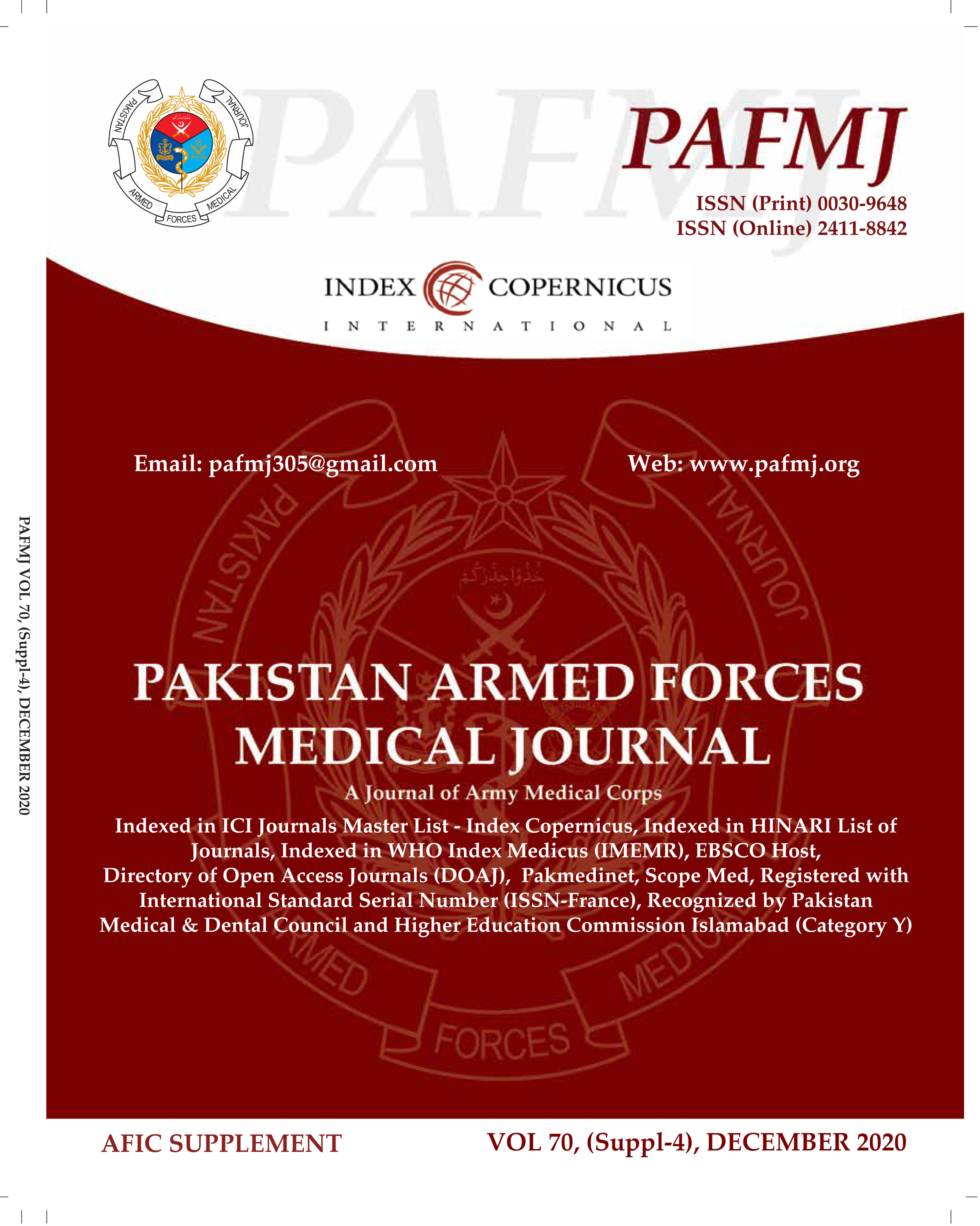DOES AUTO TRANSFUSION OF UNPROCESSED RESIDUAL BLOOD IN THE CARDIOPULMONARY BYPASS CIRCUIT LEAD TO UNFAVORABLE OUTCOMES?
DOI:
https://doi.org/10.51253/pafmj.v70iSuppl-4.6031Keywords:
Cardiopulmonary bypass, Residual blood re-transfusionAbstract
Objective: Transfusion of residual blood left in the cardiopulmonary bypass circuit is recommended. Whether this blood should be processed or not before transfusion is not known.
Study Design: A prospective non-randomized case control study.
Place and Duration of Study: A tertiary care heart center, from Jan 2016 to Dec 2018.
Methodology: A prospective non-randomized case control study was designed. Consecutive patients operated at a tertiary care hospital were included in the study who underwent different open-heart procedures on cardiopulmonary bypass. Patients were divided into two groups. Those who received the unprocessed residual blood transfusion, residual volume retransfused at the end of cardiopulmonary bypass and those who did not, residual volume not retransfused (RVNR). Important perioperative data was collected from the hospital database and
analyzed using IBM SPSS-statistics 23.0 (IBM, SPSS Inc., Chicago, IL).
Results: Of the 120 patients, 56 patients were included in the RVR group and 64 in the RVNR group. Mean age in the RVR group was 49.41 ± 14.38 years and in the RVNR group 49.27 ± 16.36 years (p=0.96). Female patients were 9 (16.07%) in the RVR group and 20 (31.25%) in the RVNR group. Residual blood left in the circuit was 271.43 ± 52 ml in the RVR group and 264.06 ± 54.5 ml in the RVNR group (p=0.45). Hemoglobin measured in ICU was 10.5 ± 1.12 gm/dl in the RVR group and 9.97 ± 1.25 gm/dl in the RVNR group (0.02). Blood products were needed in 27 patients in RVR group and 21 patients in RVNR group (p=0.57). There was no significant difference between the two groups with respect to total drainage in the first 24 hours (p=0.89). Similarly, the re-exploration rates were not different between the two groups (p=0.50).
Conclusion: Re-transfusion of residual blood left in the CPB circuit is a safe practiced. If this blood is transfused in an unprocessed form, it does not lead to adverse outcomes.















